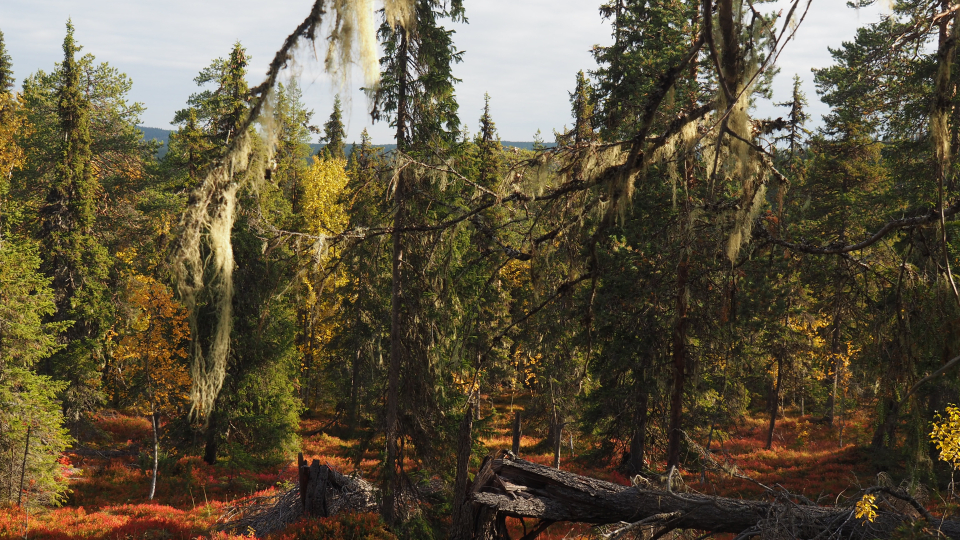Study Uncovers Widespread And Ongoing Clearcutting Of Swedish Old Forests
Almost one fourth of Sweden’s last unprotected old-growth forest was logged between 2003 and 2019.
 Photo: Ulrika Ervander
Photo: Ulrika Ervander Almost one fourth of Sweden’s last unprotected old-growth forest was logged between 2003 and 2019. At this rate, all of these ecologically unique and valuable forests will be lost in about 50 years. These findings add to the growing body of evidence for widespread cryptic forest degradation across the global north.
A small fraction of Sweden’s forests consists of older forests which have never previously been clear-cut. These rare ecosystems have a rich biodiversity and give us a valuable glimpse into the functioning of natural northern landscapes before widespread human interventions.
A new study published in the journal Earth’s Future has uncovered evidence that almost a quarter of the few remaining forests of this type were lost between 2003 and 2019, equivalent to a loss of 1.4% per year.“This land use change is not well documented across all northern countries. Its thanks to a uniquely rich dataset we could investigate this issue for Sweden and get such clear results, says Anders Ahlström, Associate Professor at Lund University, Sweden.
In the study, the research team paired Swedish national forest inventory data on forest age from more than 90 000 forest inventory plots with a government database documenting almost a million individual clear-cuts since 2003.
They found that 19% of all clear-cuts had occurred in forests that are old enough to predate the onset of large scale clear-cutting, and therefore had most likely never been clear-cut with subsequent planting or seeding. This has occurred despite the fact that the majority of productive Swedish forest is included within some form of forest product certification that prioritizes conservation of forests with high ecological values.
“At the present rate of logging, the last of these unprotected, old-growth forests will disappear in Sweden in the 2070s. This loss of old natural forest will define our landscapes for centuries, because Swedish and other boreal forests grow so slowly”, says Anders Ahlström.
The consequences of this loss for biodiversity and Swedish society are difficult to calculate.
“Given that these older forests are a relatively small and rapidly shrinking portion of the wider forest landscape, the opportunity to study these systems to understand what we are losing is rapidly disappearing”, says Daniel Metcalfe, Professor at Umeå University, Sweden.
We cannot afford to lose more of the world’s old growth forests to humanitys’ insatiable appetite for resources. Old growth forests play a key role in biodiversity conservation and planetary stability in the face of rapid climate change”, says Pep Canadell, Director for the Global Carbon Project CSIRO in Australia.
Clearcutting of older, natural forest appears to be widespread across most northern countries, but there has been little monitoring of the distribution and extent of this practice, mainly because there are no official maps of the location and extent of the forests and that natural boreal forest is difficult to distinguish in satellite images. By comparison, most types of land use conversion in the tropics can be accurately detected by satellites, so data about the rate and patterns of tropical deforestation and land conversion have become an effective tool to evaluate environmental progress in those countries.
“Deforestation and loss of pristine forests in the Amazon and other parts of the world has provoked strong criticism, yet equivalent losses of old growth forests are also occurring before our eyes in Sweden and across the global north. We must urgently map these old growth forests across the boreal region and develop strategies to conserve them. Otherwise these unique ecosystems will vanish before we have even been able to assess their climate, biodiversity and cultural values”, concludes Anders Ahlström.
Publication: Anders Ahlström, et al., Widespread Unquantified Conversion of Old Boreal Forests to Plantations, Earth's Future (2022). DOI: 10.1029/2022EF003221.
Original Story Source: Lund University

 Alerts Sign-up
Alerts Sign-up